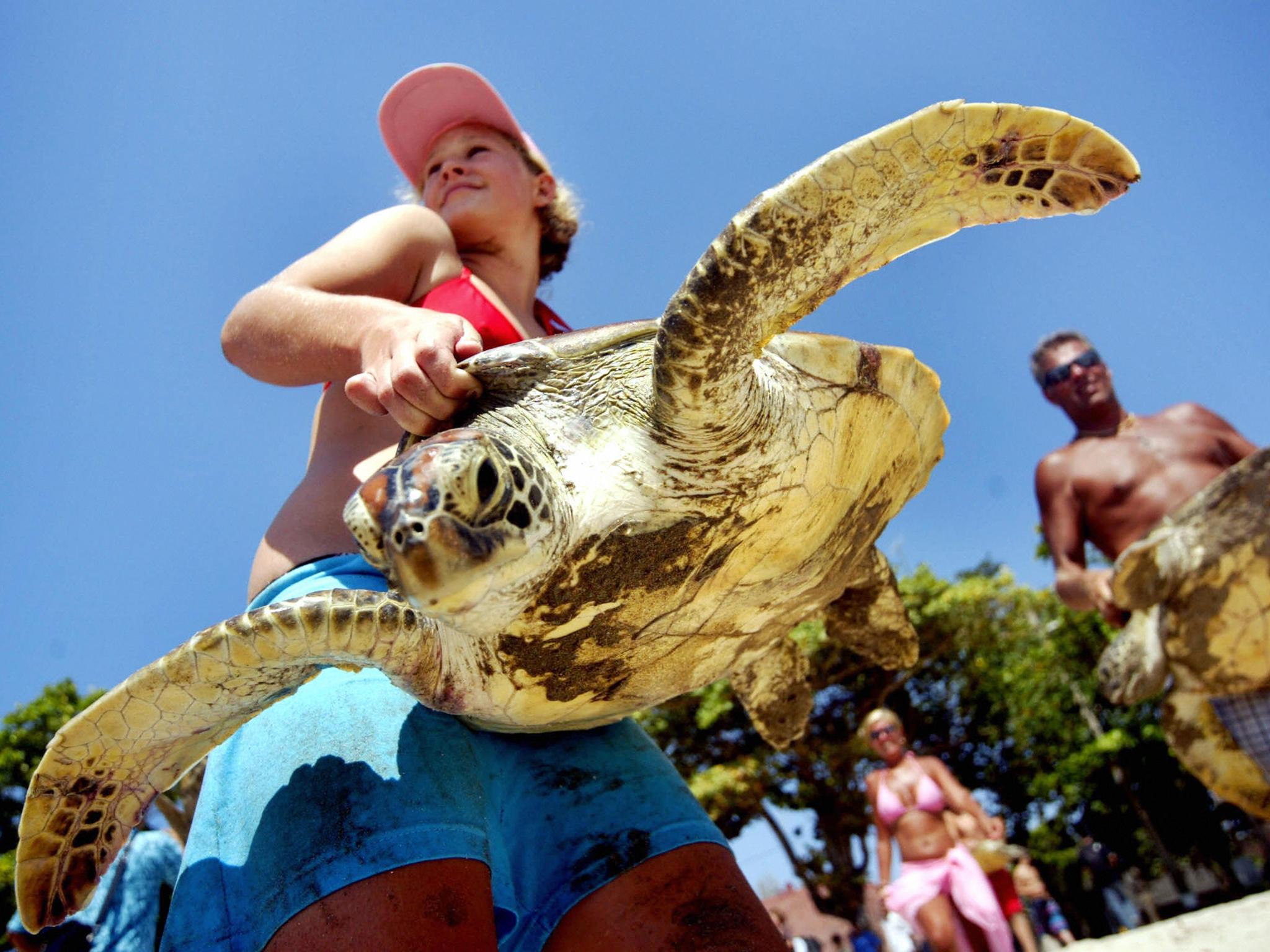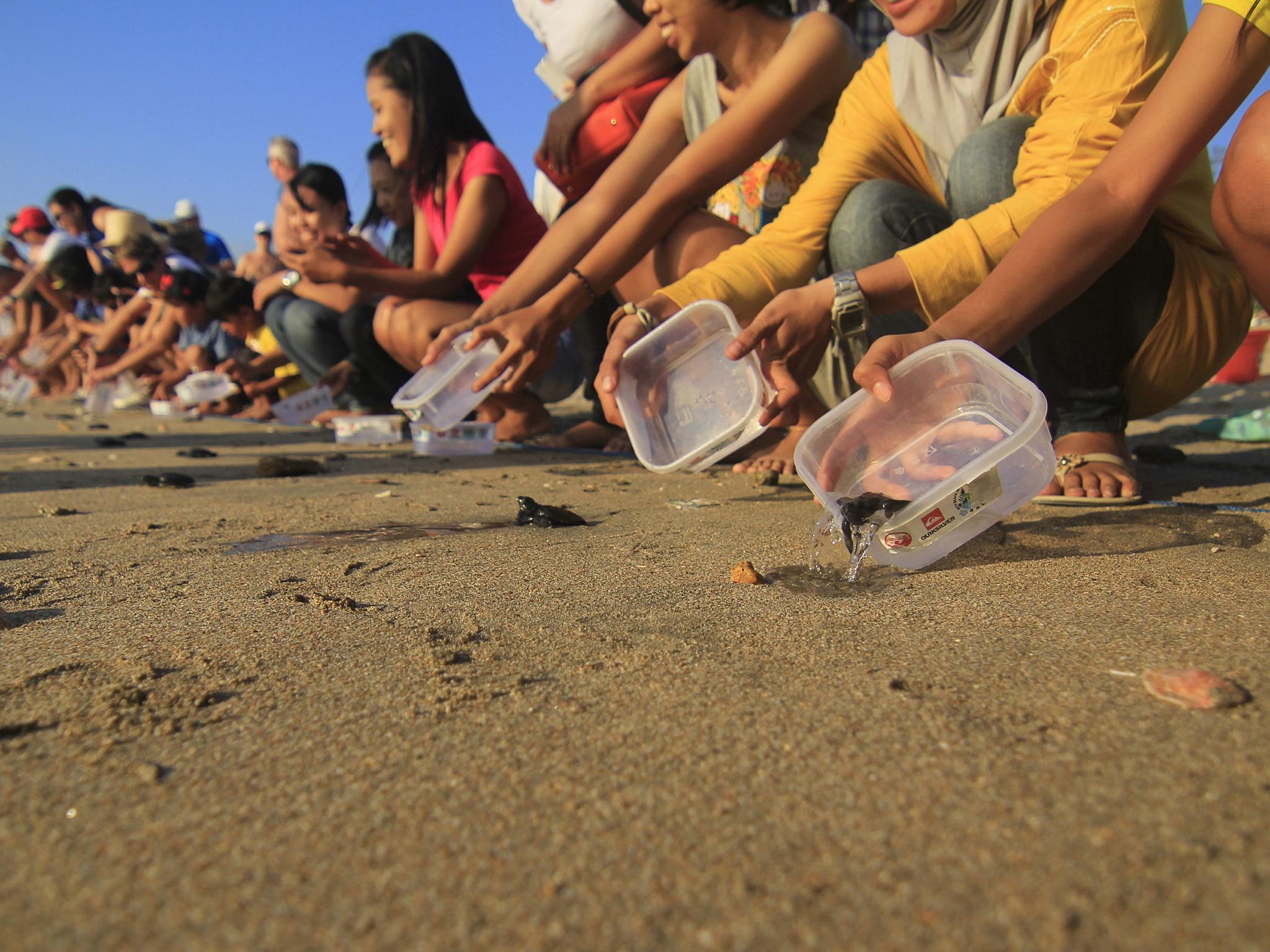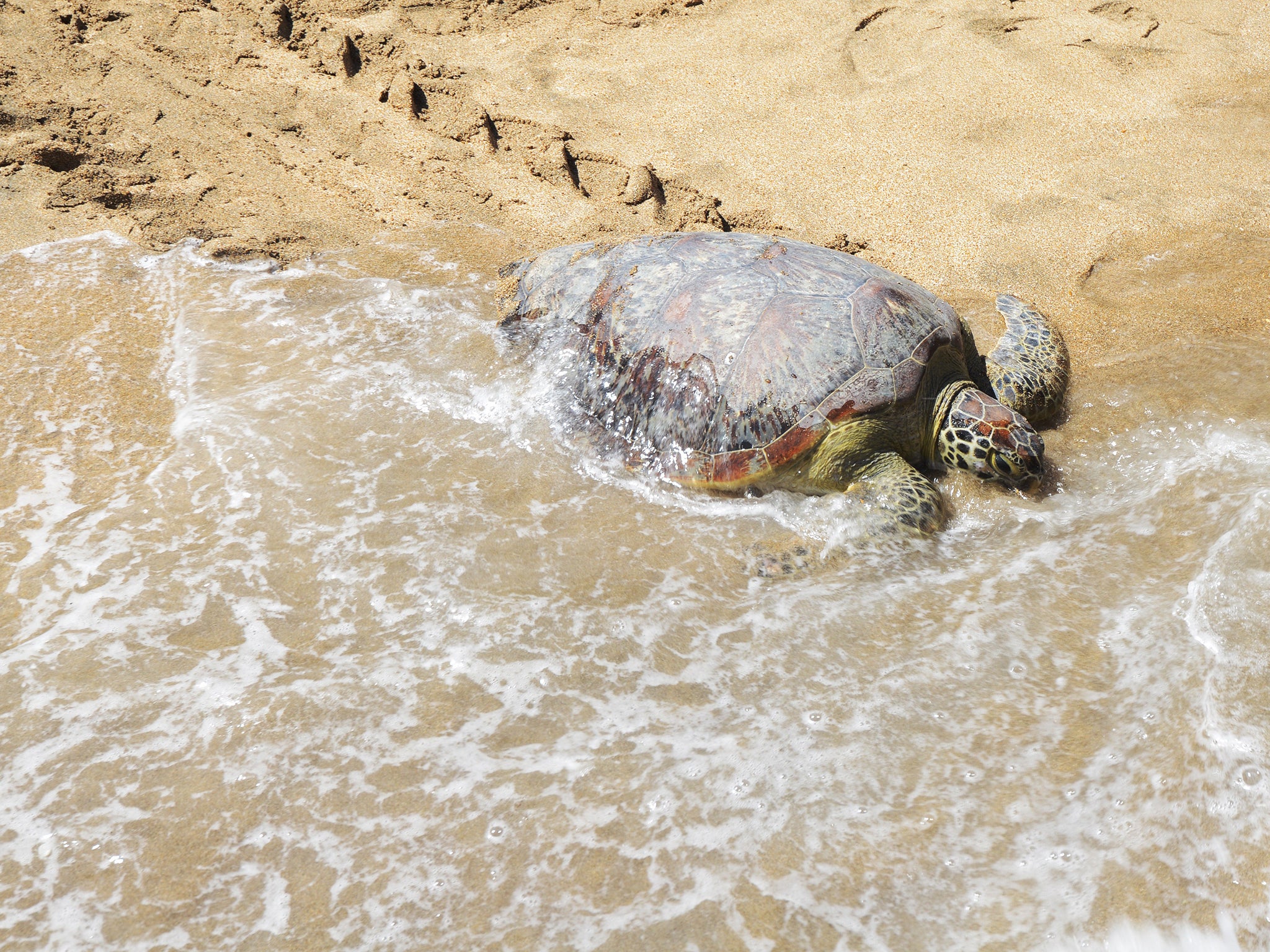How a volunteer group in Bali is fighting back against sea turtle smugglers
If the animals end up in the hands of smugglers, they are often butchered alive, but one Balinese society is trying to stop them – and succeeding

Your support helps us to tell the story
From reproductive rights to climate change to Big Tech, The Independent is on the ground when the story is developing. Whether it's investigating the financials of Elon Musk's pro-Trump PAC or producing our latest documentary, 'The A Word', which shines a light on the American women fighting for reproductive rights, we know how important it is to parse out the facts from the messaging.
At such a critical moment in US history, we need reporters on the ground. Your donation allows us to keep sending journalists to speak to both sides of the story.
The Independent is trusted by Americans across the entire political spectrum. And unlike many other quality news outlets, we choose not to lock Americans out of our reporting and analysis with paywalls. We believe quality journalism should be available to everyone, paid for by those who can afford it.
Your support makes all the difference.The people of Bali have long been of two minds about endangered sea turtles. Some want to save them. Some want to eat them.
But increasingly, the desire to save the turtle is winning out, especially among younger Balinese.
By day, Legian Beach is crowded with tourists from around the world who come for the sand and surf. By night, when the beach is dark and nearly deserted, it becomes a critical habitat for turtles.
Alex Unwakoly, a volunteer from the Bali Sea Turtle Society, was patrolling a beach across from a five star hotel one recent night when he spotted an olive ridley turtle that had crawled up on the sand to lay its eggs.
So began a rapid operation to save the turtle’s offspring.
He and a colleague kept a handful of tourists at a discreet distance while the turtle – classified as a member of a vulnerable species – laid its eggs. Other rescuers arrived. And as the turtle crawled back to the Indian Ocean, they dug up the 136 eggs, each about the size of a ping-pong ball, then put them in a bucket and took them away to hatch in a safer spot.
“Every time she lays eggs, she will come back to this place, the place she was born,” Unwakoly says. That can be several times a year.
The largely volunteer campaign to save Bali’s sea turtles is a rare success story on this popular tourist island, which struggles with environmental challenges, including shoreline litter, eroding beaches and soul-sapping traffic jams.
Turtle eggs left to hatch on their own, as nature intended, face many threats. They can be crushed by beachgoers, swept away at high tide, dug up by wild dogs or stolen by poachers. Turtles laying their eggs on the beach face the risk of being carried off and becoming dinner.
“The most important thing about conservation is how to educate the humans,” says I Wayan Wiradnyana, founder of the Bali Sea Turtle Society. “The sea turtle belongs to everyone, so everyone should take responsibility.”

Six of the world’s seven species of sea turtle inhabit Indonesia’s waters, and all of them are classified as vulnerable, endangered or critically endangered.
The group’s primary success has been with the olive ridley, which appears to be less affected by the rubbish, noise and bright lights of modern Bali.
The turtle is also said to have a fishy taste, unlike the green sea turtle that Balinese consider the most delicious.
The plight of sea turtles has improved considerably since 2001, when I came here to investigate the trade. Catching, possessing or eating the animals was banned in 1999, but even so tens of thousands of turtles were being killed.
Turtles awaiting slaughter were kept in plain sight in bamboo pens on the beach. Turtle meat was served openly at small restaurants and at Hindu ceremonies. Smugglers operated with impunity, at one point burning down a police post in protest at the ban.
The turtles were butchered alive to keep the meat from sticking to the shell. One butcher described the gruesome, 10 minute process to me: he first cut off the flippers, then separated the meat from the shell, and at the end removed the still-beating heart.
The authorities on the predominantly Hindu island began to crack down rather than risk a backlash from foreign tourists.
Hindu priests helped protect the turtle by declaring that sacrificing them was not a religious practice.
Today, turtle trade has been driven underground. Some smugglers and vendors remain in business, though, and last year Indonesia’s marine police in Bali seized more than 1,540lb of turtle meat, including more than 400lb packed in ice and sent by bus from the nearby island of Lombok.
During the two years before that, police arrested three smugglers and seized more than 120 live turtles, records show.
In a predawn raid in March on a restaurant in Jimbaran, a popular tourist area in Bali, police arrested a cook in the act of cutting turtle meat. If they had arrived much later, it would have been chopped so finely it would have been indistinguishable from other meat.
“When we got there, the flippers were already chopped up,” says Budi Prasetyo, a marine police officer. “We had to put the puzzle back together.”
In April, local police arrested a man near Kuta Beach suspected of stealing a woman’s purse. They searched his motorbike and found 97 newly dug up turtle eggs, Wiradnyana says. Police handed them over to the hatchery. Two were broken.
Wiradnyana and I Gusti Ngurah Tresna, known as Agung, began trying to save sea turtles in 2001. They recovered the eggs from a single nest, hatched them and released the babies.
The following year, they recovered eggs from two nests.

Gradually, campaigners raised awareness in the community, attracted volunteers and built a network of lookouts, such as taxi drivers and hotel security guards, who report sightings of turtles on the beach.
Last year the society retrieved eggs from a record 761 nests and released some 70,000 hatchlings. This year, they are on track to rescue and release even more.
But nearly all of them are olive ridleys. Wiradnyana points out that the five other species known to inhabit Balinese waters are not making a similar recovery.
And he worries about many long-term threats: hotel development, beach erosion and rising sea levels due to climate change all reduce the turtles’ nesting area. Illegal hunting and floating plastic garbage can kill them at sea.
When rescuers recover eggs they take them to the society’s hatchery at Kuta, one of Bali’s most crowded beaches.
The hatchery, 30ft long, is built in the shape of a giant green sea turtle. The rescuers bury the eggs in sand and wait. The eggs hatch 45 to 60 days later.
Most of the hatchlings are released within 24 hours in an uplifting, circus-style event that draws hundreds of tourists.
At one event, the hatchery is prepared to release more than 400 hatchlings. There is little advance notice, but word spreads down the beach. By 4pm hundreds of people have assembled.
Agung grabs a megaphone and climbs up on a small platform. “It’s time for action for the baby turtle now,” he announces.
He speaks briefly about the challenges the hatchlings would face to reach adulthood in the open ocean.
“For every 1,000 turtles we release on the beach, how many will survive?” he asks.
“One!” call out several people who have done their homework.
As an afterthought, he mentions that the society accepts donations. But there is no hard sell. Participation is free.
About 200 people, almost all foreign tourists, line up, receive a baby turtle in a plastic dish and head down to the beach. As directed, they stand behind a line in the sand facing the ocean. Agung stands near the waterline and issues instructions through his bullhorn.
“Are you ready?” he calls. “Everybody squat down! One, two, three, release your turtles!”
The race is on.
The turtles scramble towards the water but stop short. The tide is out and the distance considerable.
After the hatchlings get the feel of sand under their flippers, Agung directs the crowd to walk forward, pick up a turtle and carry it to the surf. Standing knee-deep in the water, they let them go a second time.
Afterwards, the participants are enthusiastic about helping to save a threatened species.
“It’s amazing,” says Teagan Hercus, 18, a university student from Australia. “It’s the best thing we have done in Bali.”
© New York Times
Join our commenting forum
Join thought-provoking conversations, follow other Independent readers and see their replies
Comments